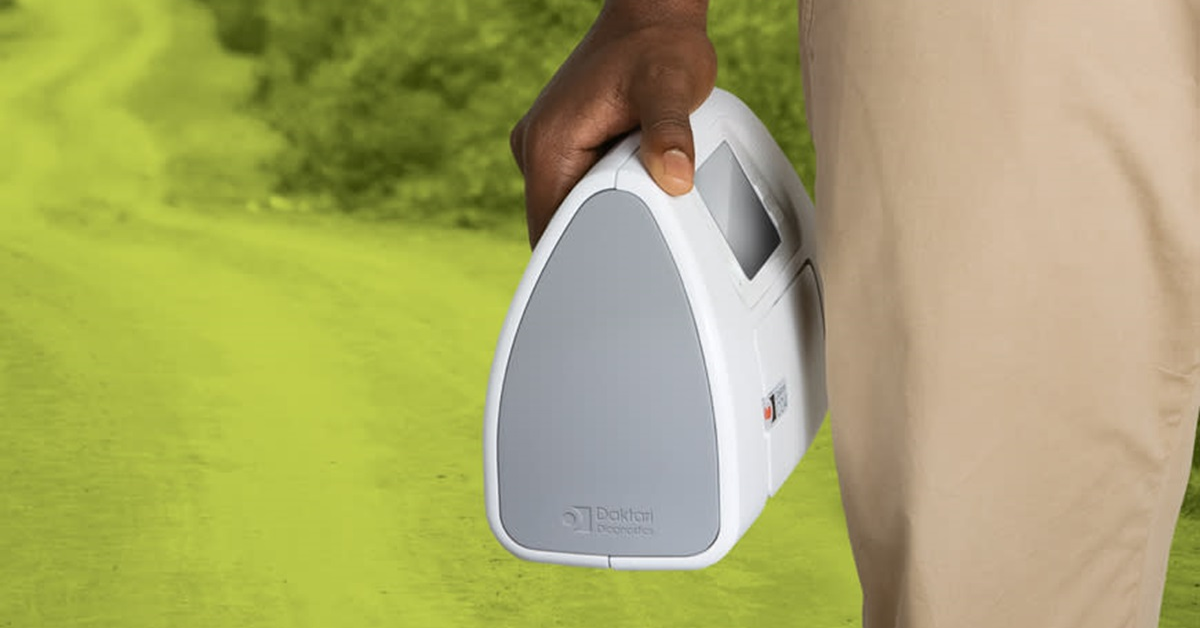Challenge
Daktari Diagnostics, Inc.: CD4 Diagnostic Instrument

PROJECT
CLIENT
SERVICE
- Engineering
INDUSTRY
- Life Sciences & Healthcare
Daktari Diagnostics set out to provide access to care in underserved communities where clinical lab testing was unavailable.
HIV is a major health issue in sub-Saharan Africa, with 4.7% of the adult population living with the infection. CD4 count, the quantity of CD4 T-cells per microliter of blood, is the primary measure of immune system health. Until recently, it was used by healthcare providers to determine when to initiate antiretroviral therapy (ART).
Daktari Diagnostics set out to save lives by developing a portable CD4 test system for use in underserved communities where clinical lab testing was unavailable. They had discovered a novel method to capture CD4 cells from a drop of blood and quantify them, via electrical detection, in the presence of certain reagents. This breakthrough technology promised to provide fast results, from a finger-stick of blood, using a disposable cartridge placed into a compact instrument. Daktari approached Continuum to help make this vision a reality.
The system had to be rugged in order to transport it via motorcycle over rough African roads. It required sufficient battery power to run for a whole day without recharging. All reagents needed to be self-contained within the disposable cartridge and demand neither refrigeration nor sample prep. Daktari also insisted that the device would be: (a) maintenance-free; (b) capable of providing accurate results with minimal required training; and (c) allow for low-cost testing. We were thrilled to take up the challenge.
Research & Insights
Ultra-fine control of reagent flow rates was the key to achieving accurate results. Continuum’s engineers developed a microprocessor-controlled actuator to precisely displace reagents from on-cartridge reservoirs and consistent performance was verified while accounting for manufacturing tolerances. This fluidic drive system design was coordinated with development of cartridge manufacturing processes to ensure repeatable performance from mass-produced consumables.
Continuum’s electrical engineers selected a readily available lithium ion “smart battery” with a capacity of 100 Watt-hours—the largest permitted on commercial flights. Through careful management of actuator current and microprocessor power our software engineers achieved all-day operation from a single charge, eliminating the need for swappable batteries.
Our designers and human factors engineers tested multiple product architectures with users, ultimately arriving at a clean, simple form that could be operated with only three button pushes. We also introduced an icon-based, language-agnostic graphical user interface (GUI).
Continuum’s mechanical engineers ensured the system’s sturdiness by integrating all electromechanical components into a compact sub-assembly shock-mounted within a tough plastic enclosure. It was sealed with elastomer membranes to allow disinfection without ingress of fluids and a robust mechanism was devised for cartridge loading.
Solution
The Daktari CD4 provides on-the-spot CD4 counts with a finger stick in about eight minutes. It works by directing a drop of blood into an assay chamber on a small plastic card, where antibodies grab onto CD4 cells while letting other white blood cells pass by. By employing a process known as microfluidic cell chromatography, the device successfully overcomes the need for complex preparation techniques, enabling the device to be simple, inexpensive, and handheld, ideal for caregiver.
Results
In 2014 Daktari’s CD4 instrument was prequalified for the WHO Diagnostics Programme. Recently the WHO recommended HIV viral load testing as the preferred method of monitoring ART, as it may provide earlier notice of treatment failure and represents a more direct measure of the risk of transmission. Daktari is now developing a version of the system to measure viral load.


